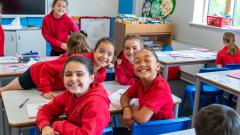
Purpose
A high-quality history education will help pupils gain a coherent knowledge and understanding of Britain’s past and that of the wider world. It should inspire pupils’ curiosity to know more about the past. Teaching should equip pupils to ask perceptive questions, think critically, weigh evidence, sift arguments, and develop perspective and judgement. History helps pupils to understand the complexity of people’s lives, the process of change, the diversity of societies and relationships between different groups, as well as their own identity and the challenges of their time.
Aims
The national curriculum for history aims to ensure that all pupils:
know and understand the history of these islands as a coherent, chronological narrative, from the earliest times to the present day: how people’s lives have shaped this nation and how Britain has influenced and been influenced by the wider world
know and understand significant aspects of the history of the wider world: the nature of ancient civilisations; the expansion and dissolution of empires; characteristic features of past non-European societies; achievements and follies of mankind
gain and deploy a historically grounded understanding of abstract terms such as ‘empire’, ‘civilisation’, ‘parliament’ and ‘peasantry’
understand historical concepts such as continuity and change, cause and consequence, similarity, difference and significance, and use them to make connections, draw contrasts, analyse trends, frame historically-valid questions and create their own structured accounts, including written narratives and analyses
understand the methods of historical enquiry, including how evidence is used rigorously to make historical claims, and discern how and why contrasting arguments and interpretations of the past have been constructed History – key stages 1 and 2
gain historical perspective by placing their growing knowledge into different contexts, understanding the connections between local, regional, national and international history; between cultural, economic, military.
The Long Term Plan For History
|
Autumn 1 |
Autumn 2 |
Spring 1 |
Spring 2 |
Summer 1 |
Summer 2 |
|
| EYFS |
Birthdays Home visits Leaf Man map of school Black History Month -Granny came here on empire windrush Special Box |
The Nativity Story Bonfire night events reflecting on what they did and firefighters who help |
Dinosaurs | Transition to year reflect on their timeline 0-5 | ||
|
Year 1 |
Changes in living memory |
Significant individuals and Space (Neil Armstrong, Buzz Aldrin, Stephen Hawking) Significant historical event (moon landing) |
Significant individuals comparison (Mary Seacole, Edith Cavell) |
|||
|
Year 2 |
Changes in living memory |
Significant historical events in the locality |
Significant individuals comparison (Mary Anning, David Attenborough) |
|||
|
Year 3 |
Changes in Britain through the Stone Age |
Changes in Britain from the Stone Age to the Iron Age |
The Roman Empire and its impact on Britain A local history study (York/Eboracum as a Roman town) |
|||
|
Year 4 |
The achievements of the earliest civilisations – Ancient Egyptians |
Britain’s settlement by Anglo-Saxons and Scots |
The Viking and Anglo-Saxon struggle for the Kingdom of England to the time of Edward the Confessor |
|||
|
Year 5 |
Study of Greek life and achievements and their influence on the western world |
A study of an aspect or theme in British history that extends pupils’ chronological knowledge beyond 1066 –WWII (The Home Front) |
||||
|
Year 6 |
A study of an aspect or theme in British history that extends pupils’ chronological knowledge beyond 1066 – WWII (The Front Line) |
A non-European society that provides contrasts with British history: The Mayans |
A study of an aspect or theme in British history that extends pupils’ chronological knowledge beyond 1066 – Crime and Punishment |

